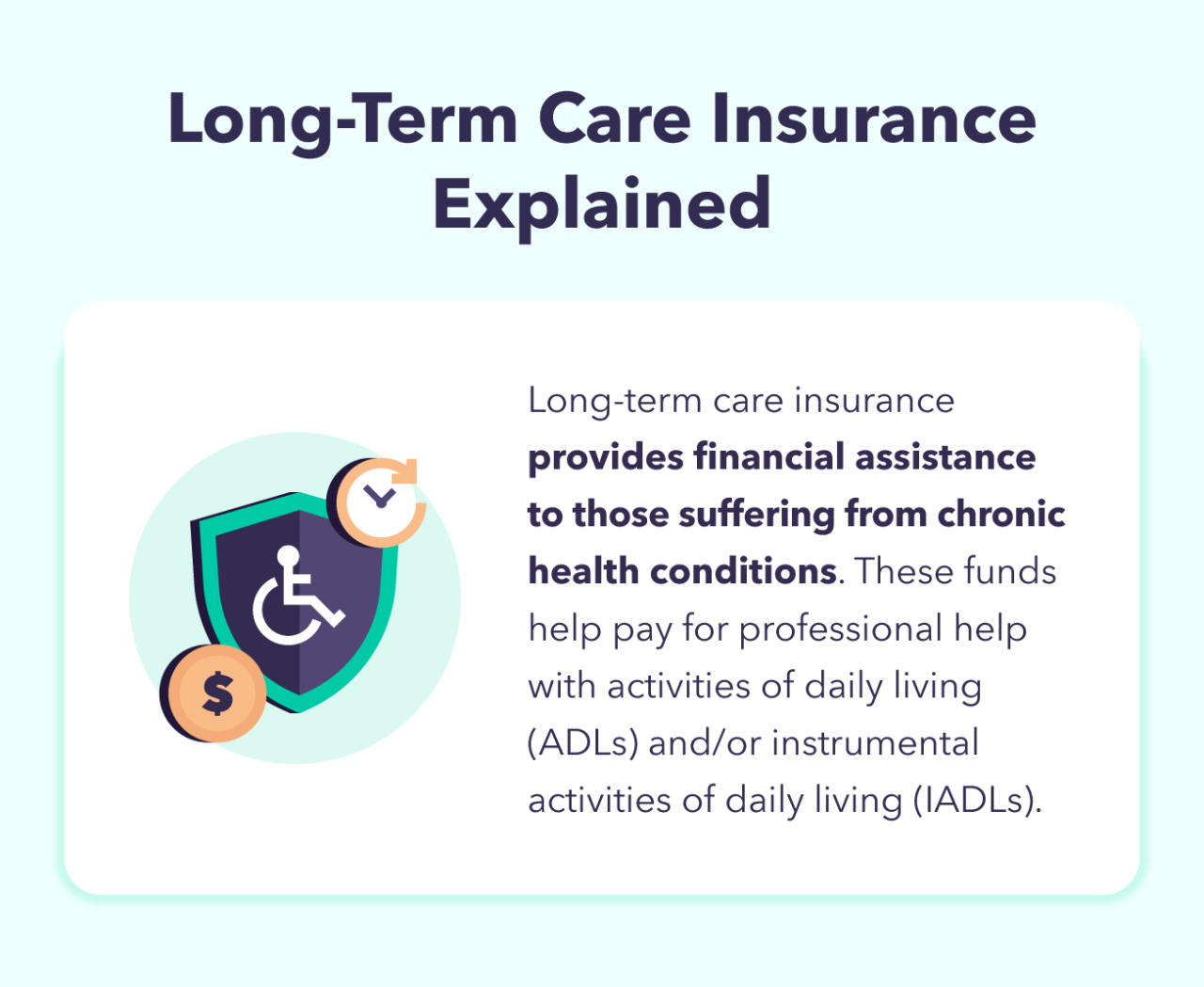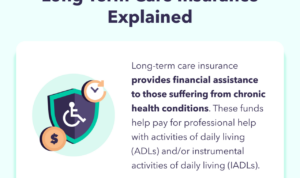Diving deep into the world of Long-term care insurance, get ready to explore the ins and outs of this essential coverage. Strap in for a ride filled with valuable insights and key information that you won’t want to miss.
As we journey through the nuances of long-term care insurance, you’ll gain a comprehensive understanding of its importance and how it can impact your future.
What is Long-Term Care Insurance?

Long-term care insurance is a specialized insurance policy that helps cover the costs of long-term care services, such as assistance with daily activities like bathing, dressing, and eating. It is designed to provide financial support for individuals who require extended care due to chronic illness, disability, or cognitive impairment.
Types of Care Covered by Long-Term Care Insurance
- Nursing Home Care: This includes care provided in a nursing facility for individuals who require 24-hour supervision and medical support.
- Assisted Living Facility Care: Coverage for services provided in assisted living facilities where individuals receive assistance with daily activities.
- Home Health Care: Support for care provided at home by trained professionals, such as nurses or therapists, to help with medical needs.
- Adult Day Care: Coverage for daytime services offered in a community setting for individuals who need supervision and social activities.
Importance of Long-Term Care Insurance
Long-term care insurance is crucial for ensuring that you are financially protected in case you need extensive care and assistance in the future. It provides coverage for services that are not typically covered by regular health insurance or Medicare.
Benefits of Long-Term Care Insurance
- Peace of mind knowing you have a plan in place for potential long-term care needs.
- Preservation of assets and savings by avoiding draining them to pay for expensive care services.
- Flexibility to choose the type of care you want, whether it’s in a nursing home, assisted living facility, or at home.
Examples of when Long-Term Care Insurance is Beneficial
- If you develop a chronic illness or disability that requires long-term care.
- When you want to protect your retirement savings and assets from being depleted by high long-term care costs.
- For individuals with a family history of illnesses that may require long-term care in the future.
Cost Comparison of Long-Term Care Without Insurance vs. With Insurance
Without long-term care insurance, the costs of care can be financially devastating. For example, a year in a nursing home can cost over $100,000, while assisted living facilities can range from $50,000 to $80,000 per year. On the other hand, with long-term care insurance, you pay premiums to secure coverage that can significantly reduce or cover these high costs when the need arises.
Coverage Options
When it comes to long-term care insurance, there are different coverage options available to suit individual needs and preferences. Understanding the key differences between facility-based and home-based care coverage is essential for making an informed decision. Let’s dive into the various factors that can affect coverage options and premiums.
Facility-Based vs. Home-Based Care Coverage
- Facility-Based Care Coverage: This option provides coverage for care received in a nursing home, assisted living facility, or other long-term care institutions. It typically includes services such as room and board, medical care, and assistance with daily activities.
- Home-Based Care Coverage: This option allows individuals to receive care in the comfort of their own homes. Coverage may include services like home health aides, personal care assistants, and skilled nursing care provided at home.
Factors Affecting Coverage Options and Premiums
- Age: Younger individuals may pay lower premiums than older individuals due to the lower risk of needing care at a younger age.
- Health Status: Individuals in good health may have more coverage options and lower premiums compared to those with pre-existing health conditions.
- Benefit Period: The length of time for which benefits are paid can impact premiums. Longer benefit periods may result in higher premiums.
- Elimination Period: This is the waiting period before benefits kick in. A shorter elimination period may lead to higher premiums.
- Inflation Protection: Opting for inflation protection ensures that benefits keep pace with rising costs but may increase premiums.
Eligibility and Enrollment
When it comes to long-term care insurance, it’s important to understand who is eligible, the ideal time to enroll, and the process of enrolling in a policy.
Eligibility for Long-Term Care Insurance
- To be eligible for long-term care insurance, individuals typically need to be in good health at the time of application. Pre-existing conditions may affect eligibility or the cost of the policy.
- Age is also a factor in eligibility, as younger individuals may find it easier to qualify for coverage.
- Some insurance companies may have specific eligibility requirements, so it’s important to research different providers to find one that fits your needs.
Ideal Time to Enroll
- The ideal time to enroll in long-term care insurance is when you are in good health and relatively young. Premiums tend to be lower when you are younger, making it more affordable in the long run.
- Waiting until you are older or already in need of long-term care services may limit your options for coverage and increase the cost of premiums.
- Enrolling earlier can help you secure coverage and protect your assets in the event that long-term care services are needed in the future.
Enrolling in a Long-Term Care Insurance Policy
- The process of enrolling in a long-term care insurance policy typically involves filling out an application form and providing information about your health and medical history.
- Insurance companies may require a medical exam or review of your medical records to determine eligibility and pricing for the policy.
- It’s important to compare different policies, coverage options, and premiums before enrolling to find the best fit for your individual needs.
Benefits and Limitations
Long-term care insurance provides several benefits that can help individuals protect their savings and assets in the event of needing extended care. However, there are also limitations and exclusions to be aware of when considering this type of insurance coverage.
Benefits of Long-Term Care Insurance
- Financial Protection: Long-term care insurance can help cover the high costs of long-term care services, including nursing home care, assisted living facilities, and in-home care.
- Preservation of Assets: By having long-term care insurance, individuals can avoid depleting their savings and assets to pay for long-term care services, ensuring financial stability for themselves and their families.
- Choice and Control: Having long-term care insurance gives individuals the freedom to choose the type of care they receive and where they receive it, providing peace of mind and control over their healthcare decisions.
Limitations of Long-Term Care Insurance
- Pre-Existing Conditions: Some long-term care insurance policies may exclude coverage for pre-existing conditions, meaning individuals with certain health conditions may not be eligible for benefits related to those conditions.
- Benefit Limits: Long-term care insurance policies often have maximum benefit limits or caps on daily, monthly, or lifetime benefits, which could potentially limit the amount of coverage available for long-term care services.
- Exclusions for Certain Services: Certain long-term care insurance policies may exclude coverage for specific services or treatments, such as care provided by family members or alternative therapies, limiting the scope of coverage available.
It’s important to carefully review the terms and conditions of a long-term care insurance policy to understand the benefits and limitations before making a decision.


